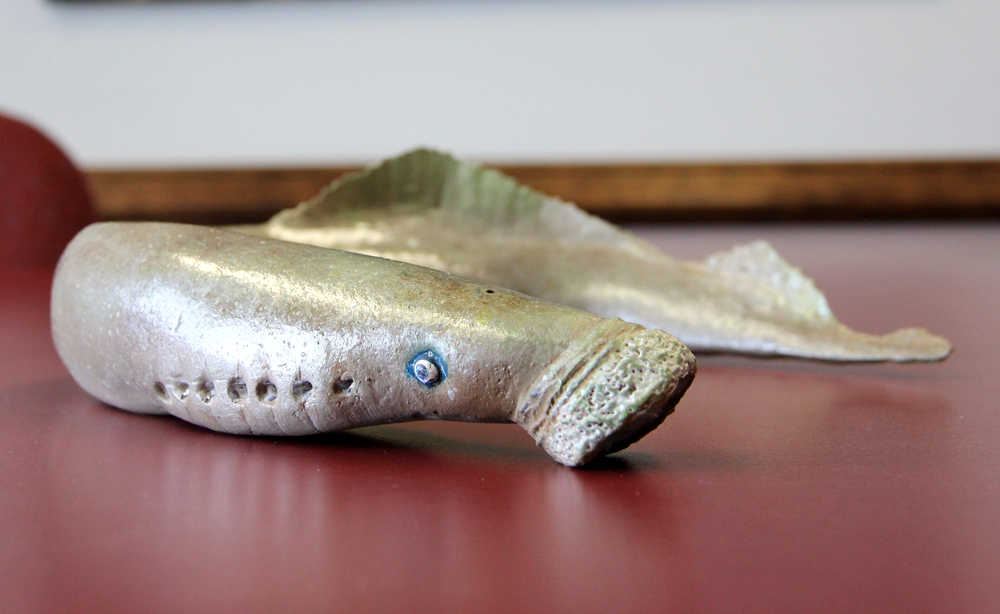King salmon, large fish swimming in small schools, look like a delicious dinner to lampreys waiting near the bottom of the Kenai River.
The lamprey, a parasitic, eel-like fish, feeds on kings, sockeye salmon and other fish leaving wounds that can become infected. Myke Bon, a fisheries biologist, is studying the effects of the lamprey on salmon.
Bon began studying the lamprey 15 years ago to look at the genetics of the fish. He is now working in coordination with the Alaska Department of Fish and Game on the study.
He said lampreys, which have existed for 250 million years, can be found in every river system in Alaska and they feed on halibut, cod, herring, whales — just about anything.
“That’s what makes (lampreys) so successful is their food sources,” Bon said. “They can feed on so many things so even though … right now we’re having a problem with our kings coming back, (lampreys) can move to a different food source so they’re still there.”
While area sport fishermen are noticing river lampreys and catching salmon with the wounds they leave behind, Bon said he doesn’t think the lampreys are a reason for the decreasing number of king salmon.
“(Lampreys are) not the cause of demise, but it can be another nail in the coffin for a species of fish because it’s so successful,” Bon said.
Typically, Bon said, king salmon will have multiple wounds per fish, and he has seen as many at 12 on one fish. Kings, he said are desirable to lampreys because they are a large salmon species, travel in small schools along the bottom of rivers where the lampreys live.
“I think everybody knows kings are tasty,” he said.
Normally, he said the fish won’t die from just the wounds. After the lamprey releases from its host, infection will set in and kill the fish.
Currently Bon’s research is studying eastside setnet kings and upper Cook Inlet sockeye. Next year he hopes to look at kings in the entire Cook Inlet drainage system, which will help to provide more accurate numbers.
He said looking at the wounding on salmon is just the beginning of the study. Data on lamprey population and wounding on smolt also needs to be collected to determine the impact on the entire stock of fish.
In 2010 researchers found 2 percent of king salmon were wounded and 1 percent in 2011. Bon hopes to get two more years of data after this year for a total of five years of research. Over six years of study, sockeye salmon on average have a wounding rate of 0.3 percent.
The lamprey is the only salmon predator that lives in marine and freshwater along with the salmon, Bon said.
“Down here on the Kenai River, my hypothesis is … (lampreys) hang out in the alluvial system here on the Kenai Peninsula and then they’ll actually ride the kings up the river to their spawning area.”
Kaylee Osowski can be reached at kaylee.osowski@peninsulaclarion.com.

